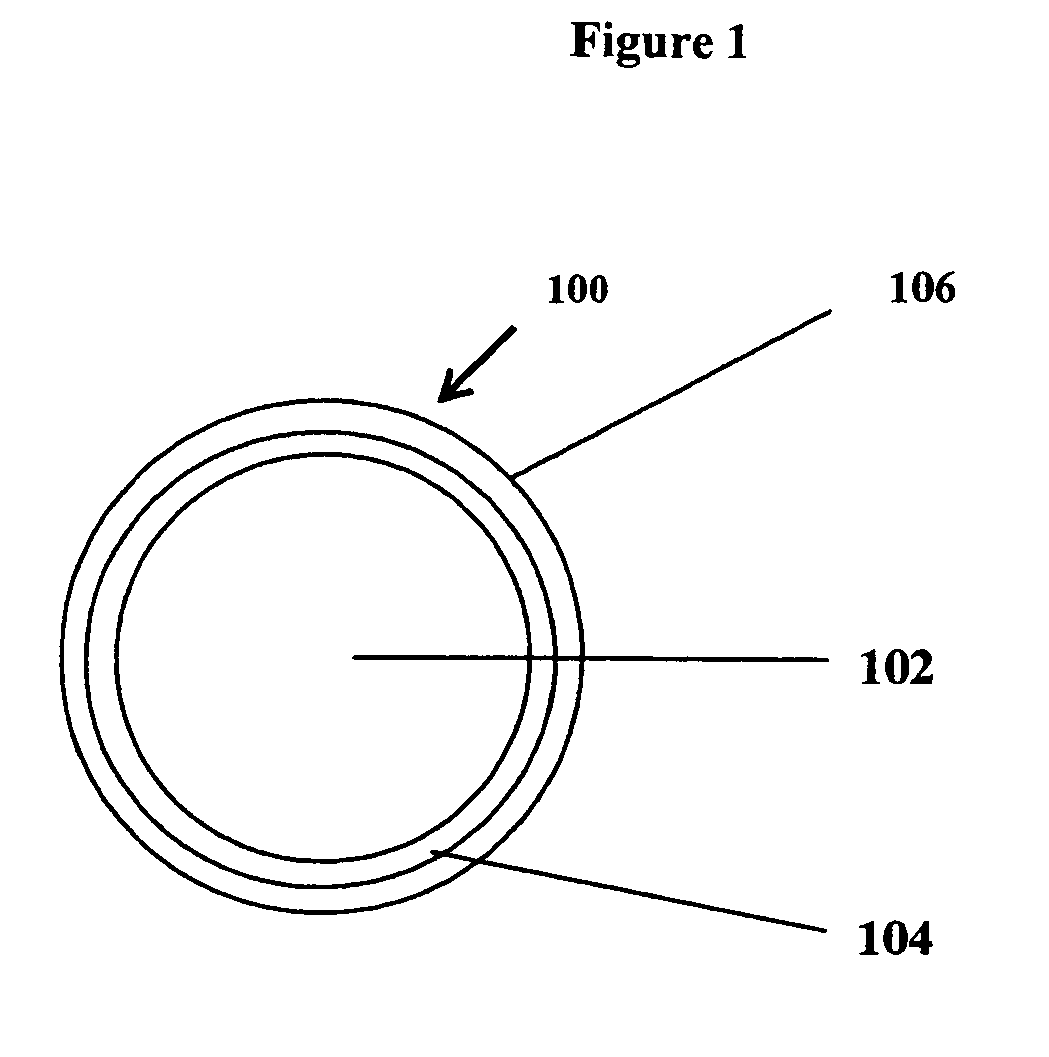Thermally reflective encapsulated phase change pigment
a phase change pigment and thermal conductivity technology, applied in the field of micro-sized, lightweight thermally reflective phase change materials, can solve the problems of limited thermal mass of current phase change pigments, such as outlast's thermal additive powder, and no inherent ability to reflect any of this solar loading, and achieve the effect of reducing the potential for phase change materials to rapidly saturate thermally
- Summary
- Abstract
- Description
- Claims
- Application Information
AI Technical Summary
Benefits of technology
Problems solved by technology
Method used
Image
Examples
example
[0064]This example demonstrates electroless plating with a monolayer coating of silver on a 100 g particulate sample of encapsulated phase change pigment material with a density of 0.9 g / cc and particle diameter of 22.0 microns. The particulate phas change material used was Frisby's Thermosorb TO-83 material where the core material was octodecane wax. Silver thickness on each particle was 900 angstroms. Volume of one particle was 5.57528×10−9 cm3, surface of one particle was 1.52×10−5 cm2, sample volume was 111.11 cm3, number of particles in the sample was 1.99×1010, volume of one coated particle was 5.71325×10−9 cm3, volume of one particle coating was 1.3797×10−10 cm3, volume of coating sample was 2.746 cm3, and weight of silver was 28.005 g.
[0065]Procedure of coating the particulate encapsulated phase change material with silver from 44.17 g of silver nitrate (AgNO3), was as follows:[0066]a. A 2000 ml beaker, which has been cleaned with nitric acid, was charged with 888.88 ml of d...
PUM
| Property | Measurement | Unit |
|---|---|---|
| diameter | aaaaa | aaaaa |
| thickness | aaaaa | aaaaa |
| diameter | aaaaa | aaaaa |
Abstract
Description
Claims
Application Information
 Login to View More
Login to View More - R&D
- Intellectual Property
- Life Sciences
- Materials
- Tech Scout
- Unparalleled Data Quality
- Higher Quality Content
- 60% Fewer Hallucinations
Browse by: Latest US Patents, China's latest patents, Technical Efficacy Thesaurus, Application Domain, Technology Topic, Popular Technical Reports.
© 2025 PatSnap. All rights reserved.Legal|Privacy policy|Modern Slavery Act Transparency Statement|Sitemap|About US| Contact US: help@patsnap.com


